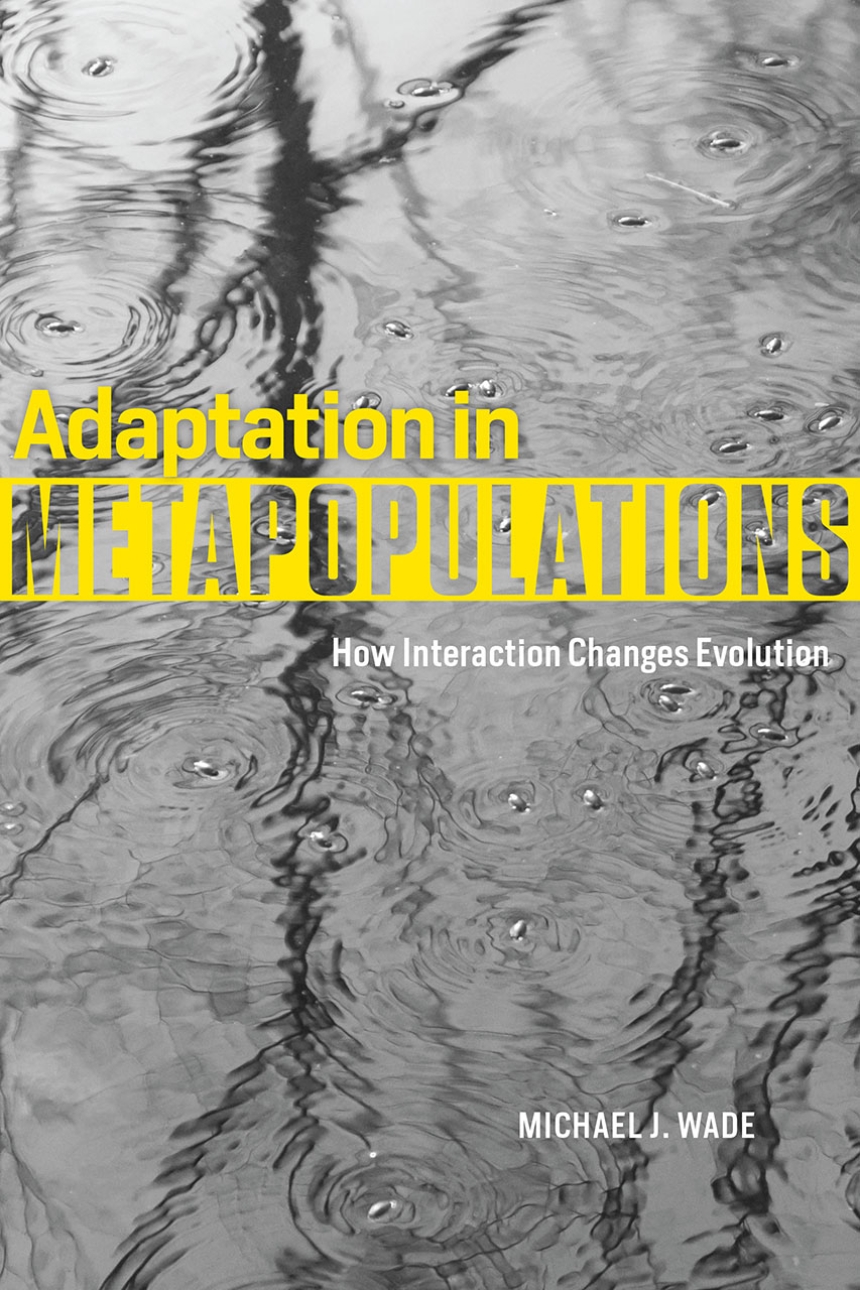Adaptation in Metapopulations
How Interaction Changes Evolution
9780226129730
9780226129563
9780226129877
Adaptation in Metapopulations
How Interaction Changes Evolution
All organisms live in clusters, but such fractured local populations, or demes, nonetheless maintain connectivity with one another by some amount of gene flow between them. Most such metapopulations occur naturally, like clusters of amphibians in vernal ponds or baboon troops spread across the African veldt. Others have been created as human activities fragment natural landscapes, as in stands of trees separated by roads. As landscape change has accelerated, understanding how these metapopulations function—and specifically how they adapt—has become crucial to ecology and to our very understanding of evolution itself.
With Adaptation in Metapopulations, Michael J. Wade explores a key component of this new understanding of evolution: interaction. Synthesizing decades of work in the lab and in the field in a book both empirically grounded and underpinned by a strong conceptual framework, Wade looks at the role of interaction across scales from gene selection to selection at the level of individuals, kin, and groups. In so doing, he integrates molecular and organismal biology to reveal the true complexities of evolutionary dynamics from genes to metapopulations.
With Adaptation in Metapopulations, Michael J. Wade explores a key component of this new understanding of evolution: interaction. Synthesizing decades of work in the lab and in the field in a book both empirically grounded and underpinned by a strong conceptual framework, Wade looks at the role of interaction across scales from gene selection to selection at the level of individuals, kin, and groups. In so doing, he integrates molecular and organismal biology to reveal the true complexities of evolutionary dynamics from genes to metapopulations.
240 pages | 21 halftones, 27 line drawings, 11 tables | 6 x 9 | © 2016
Biological Sciences: Ecology, Evolutionary Biology, Microbiology
Reviews
Table of Contents
1 Introduction
2 What Is Group Selection?
3 Group Selection in the 1970s
4 Career Beginnings and Science after the Thesis
5 Experimental Studies of Population Heritability
6 Population Ecology and Population Heritability
7 The Evolution of Sociality
8 Calibrating the Laboratory to Nature
9 Experimental Studies of Wright’s Shifting Balance Theory
10 Beyond the Shifting Balancing Theory
Acknowledgments
Reference List
Index
2 What Is Group Selection?
3 Group Selection in the 1970s
4 Career Beginnings and Science after the Thesis
5 Experimental Studies of Population Heritability
6 Population Ecology and Population Heritability
7 The Evolution of Sociality
8 Calibrating the Laboratory to Nature
9 Experimental Studies of Wright’s Shifting Balance Theory
10 Beyond the Shifting Balancing Theory
Acknowledgments
Reference List
Index
